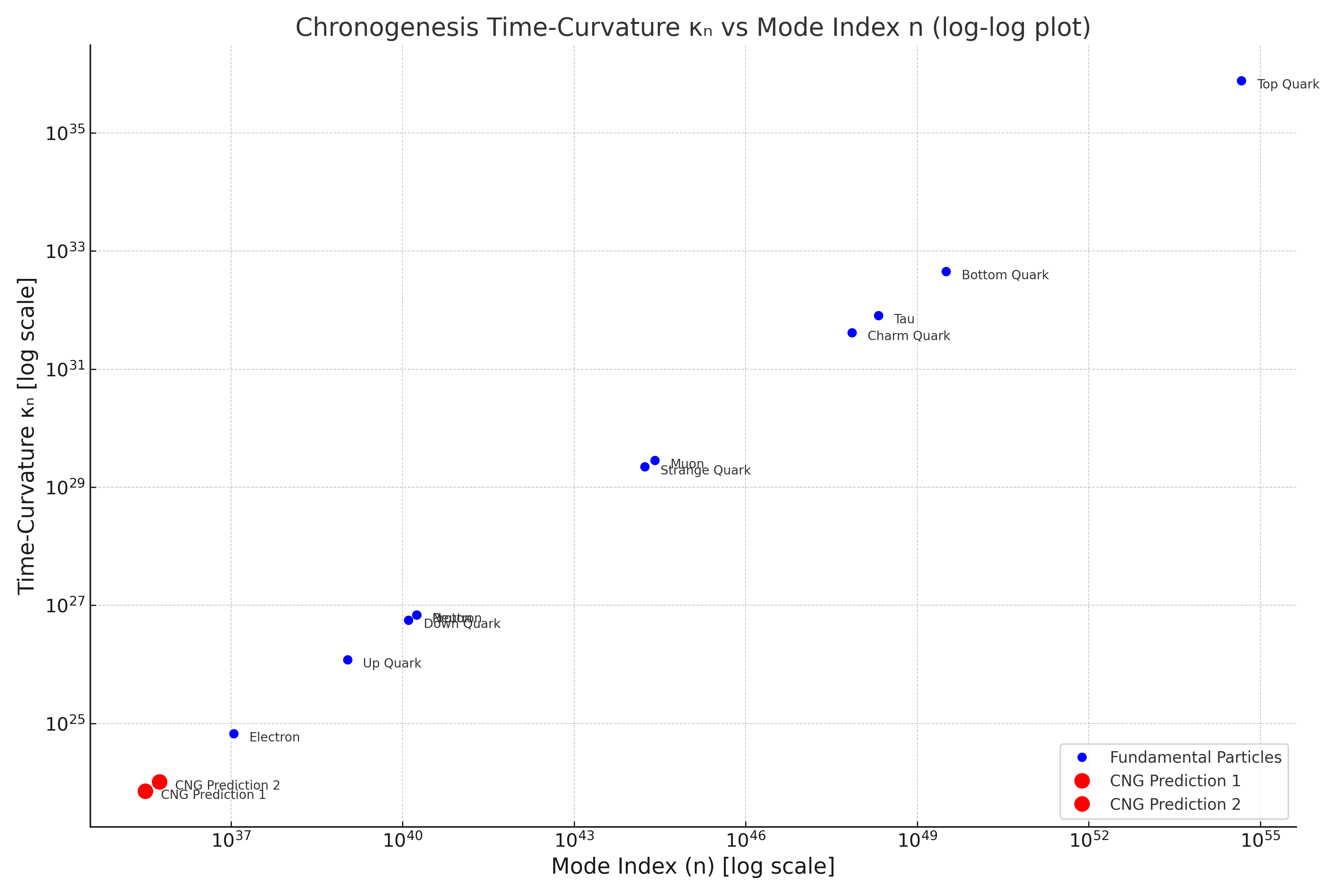Chronogenesis Mass Calculator
Select a particle or prediction to view data.
This calculator is fully parameter-free except for a single calibration constant α (alpha), which is dynamically calculated from the electron’s precise mode index and known mass at runtime. All other particle properties derive directly from the mathematically exact eigenmode spectrum of the universal time-curvature field Θ (Theta), with no fitting or empirical tuning.
This calculator is fully parameter-free except for a single calibration constant α (alpha), which is dynamically calculated from the electron’s precise mode index and known mass at runtime. All other particle properties derive directly from the mathematically exact eigenmode spectrum of the universal time-curvature field Θ (Theta), with no fitting or empirical tuning.
About the Chronogenesis Model:
This calculator is fully parameter-free except for a single calibration constant α (alpha), which is dynamically calculated from the electron’s precise mode index and known mass at runtime. All other particle properties derive directly from the mathematically exact eigenmode spectrum of the universal time-curvature field Θ (Theta), with no fitting or empirical tuning.
Properties calculated by this tool:
- Mass (mn): Predicted from the mode index (n) and time-curvature (κ).
- Time-Curvature Mode (κn): A unitless value representing the particle's mode in the time-curvature field.
- Predicted Spin: Derived from the topological winding number of the Θ-field eigenmode over a compactified time dimension. This links spin to the fundamental geometry of the field.
- Predicted Charge: Derived from the topological winding number of the Θ-field eigenmode.
- Stability/Lifetime: Resonant stability valleys in the mass spectrum (where the second derivative of mass is near zero) predict longer-lived particles and stable decays. Off-valley modes correspond to unstable resonances.
- Redshift Origin (z): Each mode index (n) is linked to a predicted cosmological redshift (z), potentially connecting particles to cosmic structures.
- Quantum Decoherence Time (τD) (fs): The model provides a formula for the collapse time of superpositions involving a mode based on the difference in the Θ field. (Note: Calculation here uses a simplified $\Delta\kappa = \kappa_n$ and $\Theta=1$).
- Entropy Contribution (Sn) (J/K): Each particle mode has an associated entropy value ($S_n$).
- Resonance Shell Layer (k): Each mode index corresponds to a predicted cosmic shell layer index (k), indicating a particle's position within large-scale cosmic structure.

Refined Mode Indices (n):